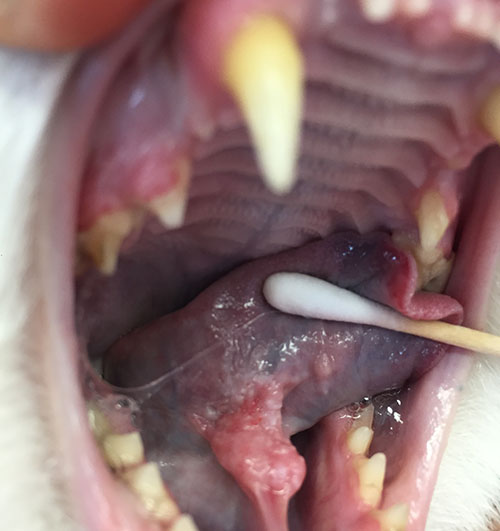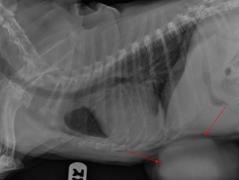How to Detect Cancer in Your Cat

How to Detect Cancer in Your Cat
June is Adopt a Shelter Cat month. Every year to celebrate, I devote my blogposts in the month of June to our furry, feline friends. June was chosen as Adopt a Shelter Cat month in part because kitten season is near its peak, and there are many kittens available for adoption in the summer and early fall. Wonderful adult cats are available for adoption from your local shelter year-round.
Today’s blogpost will offer tips for early detection of cancer in cats. In human healthcare, physicians recommend a variety of cancer screenings — colonoscopy, mammograms and PSA testing, for example – but the same variety doesn’t exist for feline patients. However, with some keen observation and attention to your cuddly cat, you can spot cancer warning signs early and stem the chances of a bad outcome.
A Monthly Tummy Rub to Find a Mammary Gland Tumor

According to an Italian study, the most common feline tumors are mammary gland tumors – and I don’t have a reason to think American cats are different. Mammary gland tumors occur on the tummy of a cat anywhere from the armpits to the back legs. They start as little pinhead size bumps and, if not removed, can become very large. Nearly all mammary gland tumors in cats are malignant and early surgery is imperative to enable a good outcome. A monthly tummy rub session with your cat will help you to identify a mammary gland tumor early, when it is most amenable to surgical removal.
Finding Oral Tumors

The diagnosis of oral cancer in cats is challenging because it’s a tumor the cat owner can’t easily see. Even veterinarians have a hard time seeing a tumor in a cat’s mouth because of a cat’s reluctance to be examined. Most oral tumors in cats are malignant, and the tongue is the most common location for tumors inside the mouth of a cat. The photo accompanying this blogpost shows a squamous cell carcinoma under the tongue.
The location of the tumor shown in the photo makes it extra hard to find and brings me to my early detection recommendation. Teach your kitten to allow you to open its mouth. When the mouth is open, take a good look at the roof of the mouth and the top of the tongue. This will help you to find a tumor when it is small. Training your kitten will also make it more likely your veterinarian can do an oral examination on your awake cat.
Weight Loss May Indicate Intestinal Lymphoma
At the Schwarzman Animal Medical Center, the most common feline cancer we treat in our Cancer Institute is intestinal lymphoma. One common clinical finding in these cats is weight loss. Weigh your cat once a month to identify any downward trend in weight before your cat’s next scheduled veterinary visit. If the weight loss is 5 or more ounces over a few months, I suggest your cat see her veterinarian earlier than the next regularly scheduled visit. Weight loss associated with an increase in vomiting or diarrhea should also prompt an urgent visit to the veterinarian’s office.
While we are focusing on how much your cat weighs, many cat owners are not sure if their cat’s weight is appropriate for the size of their frame. Use the information in our Pet Health Library to find out.

































